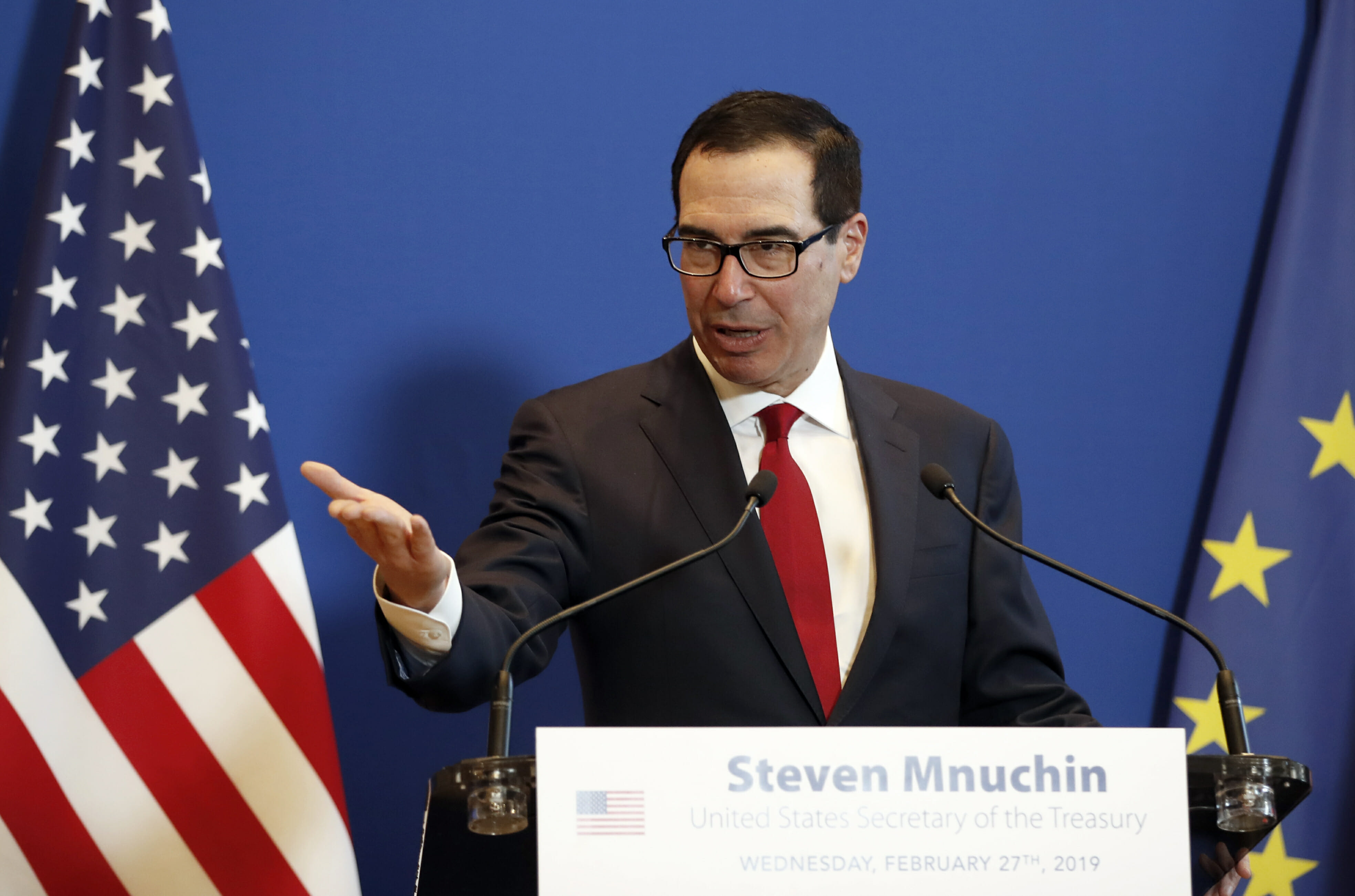
US Treasury takes first steps to avoid exceeding debt limit
WASHINGTON (AP) — The Treasury Department is taking the first steps to keep the government from exceeding the $22 trillion debt limit which goes back into effect on Saturday, setting off what will likely be months of battle in Congress on finding ways to avoid an unprecedented default on the national debt.
Treasury said that it began on Friday suspending sales of a special type of Treasury security that is used by state and local governments to help manage their bond holdings.
In a letter to congressional leaders, Treasury Secretary Steven Mnuchin said last week that the government would start with this sales suspension as a way to clear space to keep the government from exceeding the limit while Congress debates raising the limit.
The debt limit has been suspended for the past year under an agreement approved by Congress as part of a February 2018 budget deal. However, that legislation had the limit ceiling going back into effect on Saturday at whatever level the debt stood at on Friday.
Debt hit a new milestone, topping $22 trillion for the first time on Feb. 12, an increase of $2.06 trillion since President Donald Trump took office on Jan. 20, 2017.
Trump had said during the campaign that he could lower deficits and even wipe out the national debt, which is the total of all the annual deficits. But the president’s $1.5 trillion tax cut passed in December 2017 and billions of dollars in increased spending for the military and nondefense programs approved by Congress last year have accelerated the rise in the debt.
In his letter last week to House Speaker Nancy Pelosi and other Congressional leaders, Mnuchin said that Treasury was ready to utilize “additional extraordinary measures” to keep from hitting the debt ceiling.
Those measures include suspending investments in government pension funds as a way to clear space for other borrowing needed to allow the government to service the debt and make payroll and benefit payments. The investments not made in the pension funds are always replaced once the debt ceiling is raised.
The Congressional Budget Office said in a report this week that it expected that Treasury will have maneuvering room to keep from hitting the debt ceiling until late in the current budget year, which ends on Sept. 30.
Congress has always approved raising the debt limit, or in recent years, suspending it to allow it to grow without limits for a period of time. But the legislation needed to allow that to happen is often tied up in other budget battles.
In 2011, Republicans in Congress were in a budget fight with then-President Barack Obama and the approval to raise the debt ceiling came so late that the Standard & Poor’s rating agency for the first time in history downgraded a portion of the nation’s credit rating.
Experts believe that actually failing to raise the debt ceiling and thus defaulting on the government obligations including making interest payments on the national debt would be a catastrophic event that would send shockwaves through global financial markets.
In his Feb. 21 letter, Mnuchin said, “Honoring the full faith and credit of the United States is a critical commitment. I encourage Congress to raise the debt limit.”
The Western Journal has not reviewed this Associated Press story prior to publication. Therefore, it may contain editorial bias or may in some other way not meet our normal editorial standards. It is provided to our readers as a service from The Western Journal.
Truth and Accuracy
We are committed to truth and accuracy in all of our journalism. Read our editorial standards.
Advertise with The Western Journal and reach millions of highly engaged readers, while supporting our work. Advertise Today.












